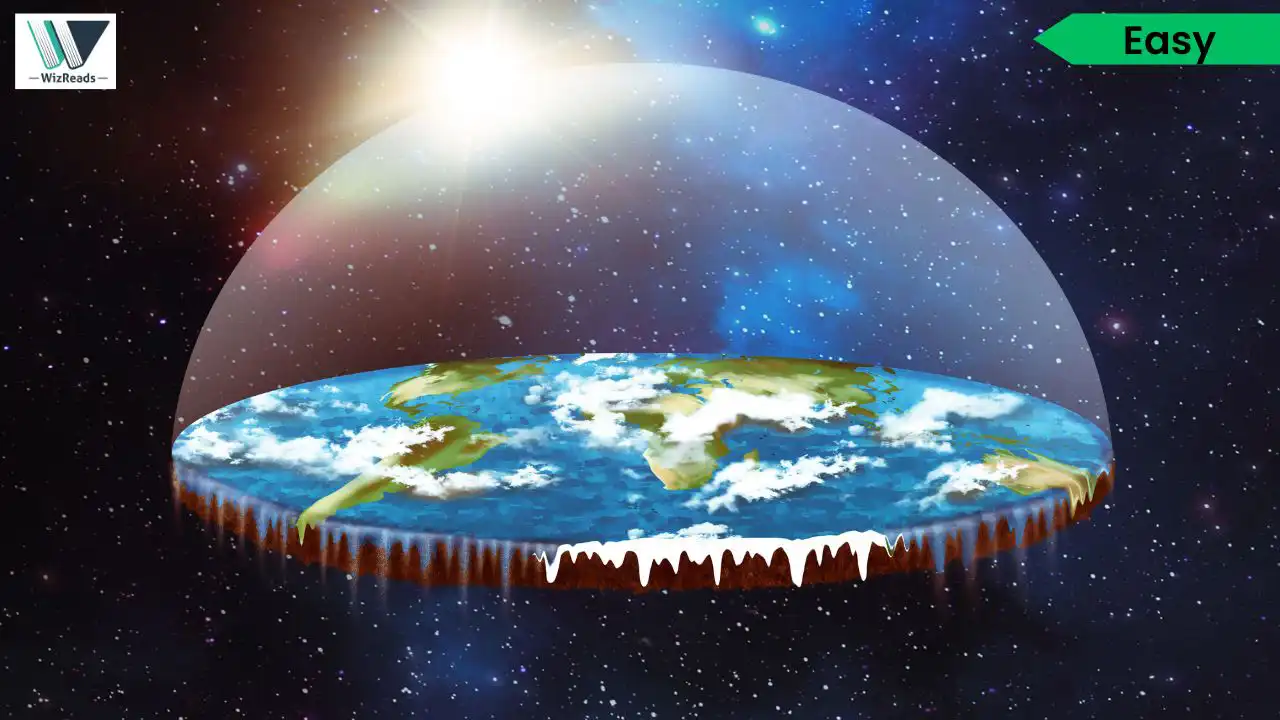
Newsletter Subscribe
Enter your email address below and subscribe to our newsletter

Enter your email address below and subscribe to our newsletter

Why do some people reject overwhelming scientific evidence? Curious about how bizarre conspiracy theories gain dedicated followers despite contradicting observable reality? Both GMAT and GRE versions examine the psychology behind flat Earth belief, requiring careful analysis of how people reconcile contradictory evidence and maintain alternative worldviews in the face of scientific consensus.
Read these Easy RC passage(s) in Science Technology and Environment and answer the question(s) that follows. You can choose the GMAT style Reading Passage and the question or the GRE RC variant and answer the GRE-style question. Even better, you could solve both.
Despite overwhelming scientific consensus regarding Earth’s sphericity, a persistent community maintains that our planet is, in fact, a flat disc. This counterscientific position, though revived in the 1950s, represents one of modern society’s most perplexing challenges to established knowledge. Evidence marshaled by flat Earth adherents typically centers on sensory observations—they point to the apparently flat horizon and claim that the curvature scientists describe is imperceptible. These observations are then bolstered by elaborate alternative physics models that attempt to explain phenomena like gravity (described instead as a constant upward acceleration of the Earth disc) and the day-night cycle (attributed to spotlights-like celestial spheres moving in circular patterns).
When examined critically, however, such claims are readily undermined. Ancient Greeks not only recognized Earth’s spherical nature but calculated its circumference with remarkable accuracy using simple shadow measurements across different latitudes. More compelling still, photographs from multiple national space programs consistently show Earth’s curvature, a point flat Earth proponents dismiss as an elaborate multinational conspiracy. The very existence of time zones and seasonal variations between hemispheres—evidenced by different star patterns visible from northern versus southern locations—further undermines the flat Earth hypothesis.
Psychological research suggests that adherence to such beliefs stems not from genuine confusion about empirical evidence but from deeper epistemological dissatisfaction with mainstream scientific methodology. As social psychologist Dr. Karen Douglas notes, these communities often prioritize alternative ways of knowing that elevate personal observation above the consensus of scientific expertise.
The passage begins by presenting the flat Earth viewpoint (a minority position), then examines the reasoning and claims of flat Earth adherents, and finally systematically refutes these claims using scientific evidence (Ancient Greek measurements, photographs from space agencies, time zones, seasonal variations) and expert analysis (psychological research from Dr. Douglas).
Correct Answer: Choice (A)

The resurgence of flat Earth theory presents an intriguing case study in the rejection of scientific consensus. Proponents claim that Earth is a disc with Antarctica forming an ice wall perimeter, while the scientific establishment “fabricates” evidence of sphericity. Some flat Earth adherents, like the Flat Earth Society’s leadership, contend that all space photographs are manipulated, citing anomalies in NASA imagery as corroboration. Others, particularly those attending international flat Earth conferences, assert more categorically that space itself is illusory—the cosmos merely a projection upon a celestial dome. These disparate interpretations reveal considerable incongruity even within the movement.
Although some flat Earth proponents portray themselves as applying critical skepticism, cognitive scientists suggest that their beliefs often prioritize personal sensory experience over complex scientific explanations they cannot directly verify. The attraction of such theories often comes from the satisfaction of possessing “insider knowledge”—feeling they’ve discovered hidden truths that mainstream science deliberately conceals from the public. What remains particularly anomalous, however, is that flat Earthers accept scientific consensus on other matters requiring equally complex evidence, suggesting selective skepticism rather than comprehensive rejection of scientific authority.
The passage suggests that flat Earthers “accept scientific consensus on other matters requiring equally complex evidence” while rejecting Earth’s sphericity, indicating inconsistency (option A). It explicitly mentions “considerable incongruity even within the movement” and describes conflicting views about space and celestial phenomena, supporting option (B). The passage also states that ” The attraction of such theories often comes from the satisfaction of possessing insider knowledge,” which directly supports option (C).
The correct answers are (A), (B), and (C).